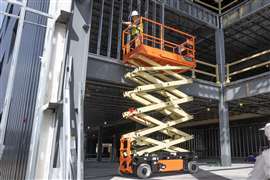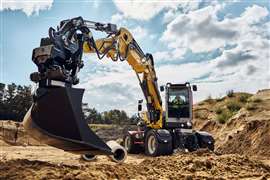Already with you: SC&RA comment September 2019
09 October 2019

Recent statistics reveal that for every 10 technicians retiring, only two are coming into the industry.
Unfortunately, what often gets lost in the vocation equation with both young and semi-young people is that the vehicular tech industry is no longer a “grunt and turn the wrench” option. Vehicles, including trucks of all sizes and duties, as well as mobile cranes, are often as much computer as machine, and technicians must know how to service all aspects of the vehicle.
New technology, for example, onboard computers, requires technicians with higher skill levels. And with the ongoing development of hybrid, electric and now autonomous vehicles, a strong mechanical and computer skill set is required to succeed and thrive as a technician in the fast-paced industry. All the more reason to grow your own.
Enrolment at tech schools is down almost everywhere and most industry experts will agree the need for technicians is only going to grow. Helping people with basic skills acquire more in-depth knowledge and a broader skill set, along with keeping them once they’ve been hired, is vital.
Take a hard look
Contrary to what many fleets might believe, that target market (by age) for technician jobs is around 25 years old. At this point in life, most people are beginning to see the advantage of steady work, good pay and benefits. The only problem is they’re still a little young to afford their own training. Truthfully, however, to “grow your own,” you’ll likely have to be willing to financially commit to their progress – although it’s both realistic and acceptable to ask them to stay and work for a minimum period following any paid training.

That said, it’s also to your benefit to understand what types of skills you need them to have. Indeed, you may need your techs to work mostly on engines and transmissions but you might also need them to work primarily on PMIs, diagnostics or electrical systems and brakes. Though it might sound like a given, “soft skills” are also a must: showing up to work on time, working well with others and exhibiting a positive overall attitude.
In addition, fleets need to make an effort to understand why people leave the skilled trades. Top reasons include: a poor relationship with a boss; stagnation – i.e., no promotional track; working for a company that puts profits above people; meaningless work; a lack of recognition; and a toxic work culture. As a leader, it behooves you to take a hard look at that list and ask yourself if any of those reasons might apply to you or your people.
Once trained up, it’s also wise to partner your homegrown techs with a mentor. Industry statistics reveal that the retention rate among workers with first-time employees who provide guidance is nearly 90 percent, while it’s barely more than 30 percent for those who receive little to no help after initial training.
An additional approach: maybe you need a new “B” level tech. Look at your roster; how long have they been with you? Are they up for a challenge? Perhaps your “C” tech can bump up. Behind him or her, perhaps your “D” tech is ready to make the leap to “C.” Maybe your technically inclined and dependable porter is ready to become your new “D.” Now you just need a new porter.
Ultimately, home-growing your technicians isn’t just good for morale – it might just do wonders for your business. Once word gets out, your labour shortage issue, at least in the garage, could be a thing of the past.






